Don’t just Play the Game
The twelve kids, ages 11-14, settled into their chairs looking at the opening screen of a computer game called Minecraft. Logan, 14, and Luther, 11 had already open the game and were clicking around. Logan started changing falling rotten Zombie flesh to diamonds (sounds logical) and Luther couldn’t break a block, but he could blow it up and light dirt on fire.
During this past school year I had the opportunity to attend a couple of after school sessions of Coding Camp for Kids: Minecraft Mods at Sonoma County Library. The free sessions were held at the Healdsburg, Rohnert Park-Cotati, and Sebastopol Libraries with the Healdsburg and Sebastopol session being after school for five days and the Rohnert Park-Cotati session every Saturday in April.
The camp, whose tagline is the title of this article, was funded with a $6k grant from the U.S. Institute of Museum and Library Services, administered by the California State Library. Rebecca Forth, Assistant to the Director of the Sonoma County Library in California, who wrote the grant told me that the funds paid for the Minecraft licensing and the cost of the instructor, Joe Naujokas, a computer programmer who works in San Rafael. Most of the students who signed up were already Minecraft players, so learning how to change and create code in order to manipulate the popular computer game would be the next step in their knowledge of the game.
Games like Minecraft are gaining more and more momentum in education as educators and librarians are using them in innovative ways across the country.
Minecraftis a consumer game where players can craft objects from various materials in the game, build structures, interact with other players, or battle monsters. The game can be played in different modes, from creative mode to survival mode, and players can play solo, with friends on a designated server, or with others online. This popular game has more than 100 million users worldwide and an educational adaptation, MinecraftEdu. The adaptation further offers custom versions designed for teachers and students, onsite workshops and in-service training, and world-building tools that make it easier to incorporate curricular content. A video case study of its use in the classroom is available at on the Joan Ganz Cooney Center website.
Minecraft is in the sandbox genre of games which are characterized by their open-ended exploration environments as opposed to linear, goal-oriented games. They have multiple user paths and open-ended structures. These games tend to be highly learner centered, designed to foster 21st century skills including problem-solving, collaboration, and creativity, and frequently allow players to experiment with the mechanics of game play. Some sandbox games also allow different content to be placed within the sandbox “container,” versatility that can often appeal to teachers. Sandbox games follow in a tradition of student construction that derives from the Logo programming movement in the 80’s and 90’s, which despite never becoming commercially successful, has certainly captured the imagination of researchers and educators.
Minecraft is the brainchild of Markus Persson, a Swedish game designer, who was captivated by the simple graphics and open-ended play of games he encountered growing up. Released in 2009, Minecraft lets users build almost anything they can think up out of multicolored cubes.
Although this camp was about coding the kids also got to play with their own creations. The camp goers were at desks which were arranged in a horseshoe configuration with a projector on a lectern in the middle and the projector screen on the far wall. The laptops that kids used are owned by the library and have been upgraded with extra memory the cost of which was also paid for by the grant.
Joe then told the students what the goals of the camp were: have fun, learn Java, learn the core concepts of coding, and how to use professional software tools. He explained that Java is an object oriented computer language and that they will be working with Eclipse, professional-grade open source software for writing and editing computer code. Modding refers to making modifications to existing code that allows players to alter the instance of Minecraft installed on their computer to create new blocks, new items, and new behaviors in the game.
After explaining a little about binary and how it works, like 1s and 0s mean on or off, Joe introduced the first challenge: to create a message on the opening screen of the game. The students then got to suggest modification ideas like create new kinds of armor with new attributes, give a pig wings, and bake a chicken into a diamond. The more advanced students were allowed to help other students but they couldn’t drive for them meaning they could only advise and not tap the keyboards.
Forth is on to something, as teaching students how to code is the next step in their computer science education.
As part of a national educational movement, computer coding instruction is growing at Internet speeds. Since December, 20,000 teachers from kindergarten through 12th grade have introduced coding lessons, according to Code.org, a group backed by the tech industry that offers free curriculums.
In addition, some 30 school districts, including in New York City and Chicago, have agreed to add coding classes in the fall, mainly in high schools but in lower grades, too. And policymakers in nine states have begun awarding the same credits for computer science classes that they do for basic math and science courses, rather than treating them as electives. Code.org is leading a national push to make computer science a core K-12 curriculum.
The spread of coding instruction, while still nascent, is “unprecedented — there’s never been a move this fast in education,” said Elliot Soloway, a professor of education and computer science at the University of Michigan.
Major tech companies and their founders, including Bill Gates and Facebook’s Mark Zuckerberg, have put up about $10 million for Code.org. The organization pays to train high school teachers to offer more advanced curriculums, and, for younger students, it has developed a coding curriculum that marries basic instruction with video games involving Angry Birds and hungry zombies. The kids learn to move basic command blocks to get the Angry Bird to its prey, and then play with slightly more complex commands like “repeat” and then learn about “if-then” statements, an elemental coding concept.
One of the more interesting features of Code.org’s tutorials is their “unplugged” sessions for younger kids. In these lessons kids learn about computer programming using only drawing materials and craft items. Concepts like abstraction are learned through the word substitution game “Madstractions.” How coding work is taught using graph paper and colored pencils to create instructions using only arrows and squiggles and how writing a set of instruction that show how multiple solutions can lead to the same results and how some solutions are better than others creates algorithms. Also include are unplugged lesson on how the internet works and how the of computational thinking is the concept of taking one big problem and breaking it down into simpler smaller problems.
Forth would also like to see more girls engaged in computer and technology education. In the Healdsburg session only two students out of the fourteen were girls. Janice Weinman, the executive director of the Washington-based Association of American Women said, “this is becoming a new club (computer technology) from which girls are feeling disenfranchised. Consequently, girls are not going to be appropriately prepared for the technology era of the 21st century.”
AAUW’s main purpose is to support female inclusion in all education and this year the Healdsburg branch will send eight local junior high school girls to Tech Trek Camp at Stanford University and sponsor 54 girls in the GEMS (Girls Engaged in Math and Science) field trips grogram.
Another goal of Forth is to develop a program tool kit to be shared with other public libraries so that they can launch their own coding camps as well. “The idea is to create a turn-key program plan so all the documents are there, as well as curriculum and resources, so they can have what they need,” she said.
At this time, local funding from Friends of the Library groups are funding ongoing Coding Camps through the summer. Five additional workshops have been added, and Forth proudly announced that nearly half of the nearly 75 registrations to date have been girls. For more information, please visit http://sonomalibrary.org.
Support Articles
Sonoma Library to Host Minecraft Camp
Video game ‘Minecraft’ finds a home in schools
Reading, Writing, Arithmetic, and Lately, Coding

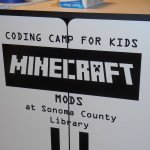
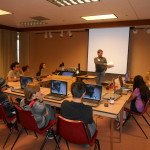
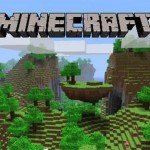
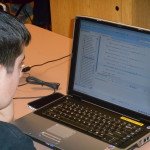
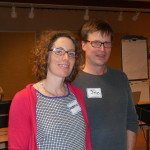
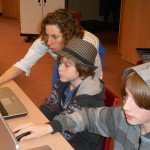
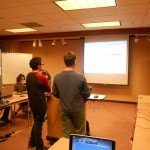
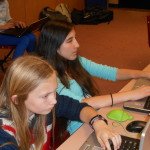
Recent Comments